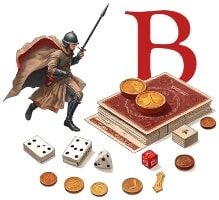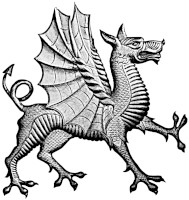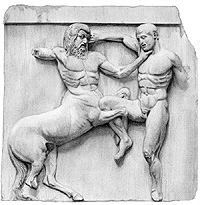Formerly published as ‘Dark as a Witch’s Hate,’ reposted here with revisions
Reading from pages 285-313 of The Conquering Sword of Conan, Del Rey, 2005
The untitled notes, seems to this reader, to have been inspired by the Ohio frontier during the American Revolution, complete with a savage “wizard” inciting the tribes to action against the frontiersmen, much like the prophet brother of Tecumseh of the Shawnee. The notes also outline Conan’s rise to kingship.
Gault Hagar’s son is a frontiersman in a time when the parent nation has betrayed the settlers to their savage enemies and a usurper is rising to challenge the corrupt king. That Usurper is Conan, an outsider who is more in sync with the wishes of the common man than the ruling class. Gault has seen a hideous sorcery committed by a shaman of the restive tribes that are rising to finish off the settlers. The entire plot and character interactions worked across these two drafts seem to be inspired by frontier tales of the American Revolution, when settlers found themselves caught between the forces of distant civilized rulers and those of nearby savages.
Wolves Beyond the Border is a kind of epilogue to Howard’s fantastic tale Beyond the Black River and is at the same time a prologue to the stories set later in Conan’s career. This is not a Conan story but a story set in that dread-haunted world across which he blundered and plundered from the point of view of a woodsman of the frontier. Just as Beyond the Black River was a thinly-veiled ‘leather-stockings’ tale [Stories set on the 1700s American frontier] on the order of Last of the Mohicans and The Deerslayer, so is Wolves Beyond the Border.
This unfinished tale is an excellent item for inclusion in the back matter of the book containing the stories beyond the Back River and The Black Stranger, as it seems to link those tales with Conan’s overthrowing of the Aquilonian monarchy. The frontier is more fully fleshed out as is Howard’s racial scheme, concerning what is his perennial pet race, the Picts:
“The Picts are a white race too, in that they are not black nor brown, nor yellow, but they are black-eyed and black-haired and dark of skin, and neither they nor the Ligureans [a race that only appears in this draft, as enemy-neighbors of the Picts] are spoken of as ‘white’ by the people of Westermarck, who only designate thus a man of Hyborian blood.”
In all of Howard’s racially-charged fiction, it is such realistically nuanced and conflicted visions of racial identity that both disturbs the sissy reader and thrills the intact human that reads of a fantastical land that is as real in terms of hates, prejudices and ethnic antipathy as our own. Attention to race and ethnic identity within the story is the aspect of Howard’s work that renders his weird fantasies more real in terms of feel than the works of other authors, who must sketch racial animosity across species lines, using invented non-human races such as elves, dwarves, orks, goblins, hobbits, Klingons and Vulcans in order to invoke hatred within the context of the tale. Gault is a compelling character and is interestingly presented in first person narrative, which strikes this reader as an attempt to improve and expand the view of Conan and his world. Howard had already done much along these lines with his use of female perspective characters such as Livia and with Balthus, Conan’s only real sidekick in the series.
As a draft this is hard to rate in terms of entertainment value. The first of the three chapters is as good as anything written from the Conan perspective. The following material would have had to have been rewritten a third time to get the reader to whatever conclusion Howard envisioned for the tale.
The title was great.
The opening scene was taut with anticipation and fraught with supernatural menace.
The second scene was adequate where the woodsman brings back news of a traitor fomenting an invasion of savage Picts from over the border.
This story would have been made saleable if Chapters four and five saw the entry of Conan into the narrative frame. Perhaps such an entry did not fit with the author’s notion of how Conan came to power, resulting in the story being discarded.
For some reason—perhaps another project and the unlikelihood of selling a Conan tale absent Conan—Howard moved onto something else and left this like a footprint on his literary trail for those of us who would attempt to follow him. My parting impression is that Howard was trying consciously to link his visceral belief in ancestral memory—represented most vividly by the proto-Gaelic Conan character—with his desire to celebrate his American heritage. Somewhere along the line he seems to have lost touch with the ethnic demon that so informed most of his work and put the tale aside.
I do favor the way in which Chapter 3 ends, marking the story as intended to comprise five chapters:
“All but four of our men had been slain in the desperate fighting, but we started instantly in pursuit, sending back one of the wounded men to warn the town.
“The trail led into the wilderness.”











